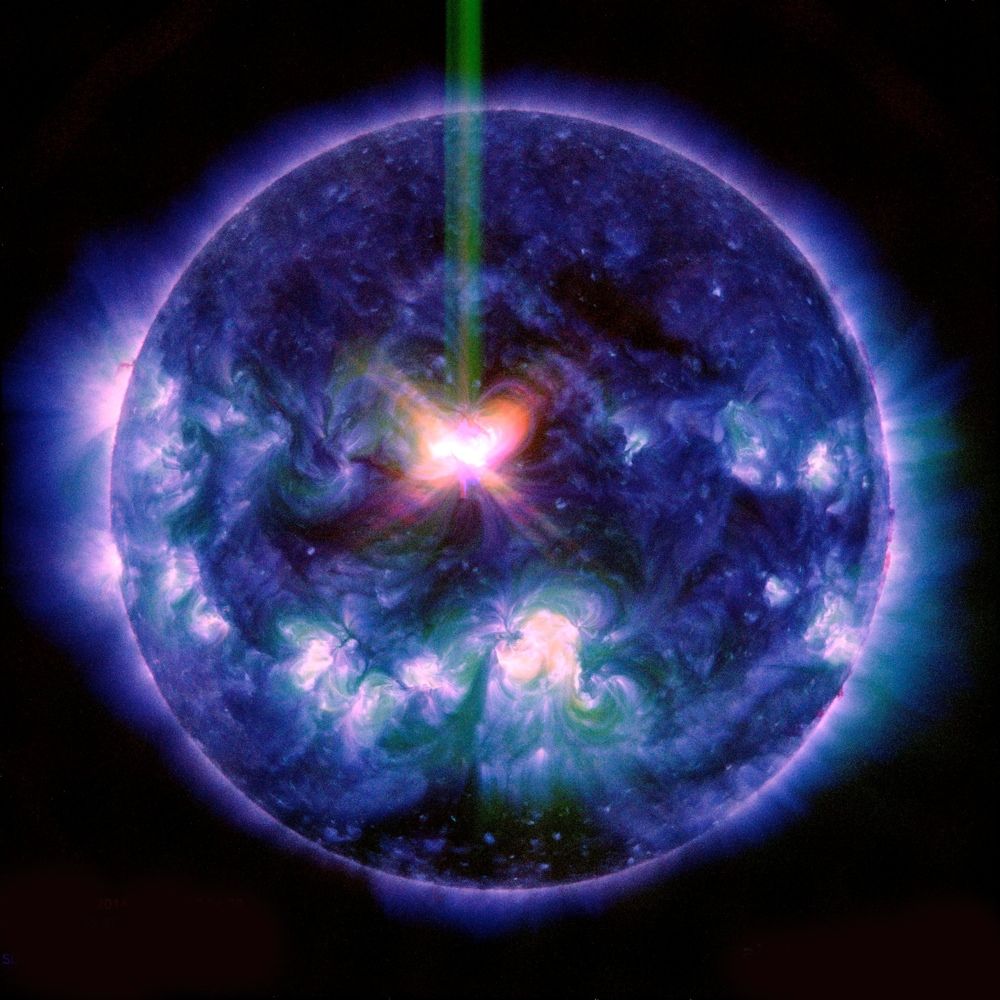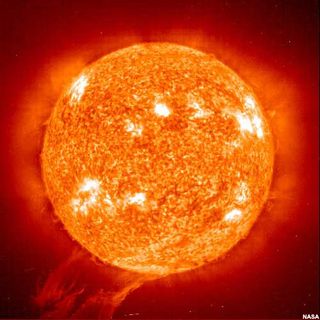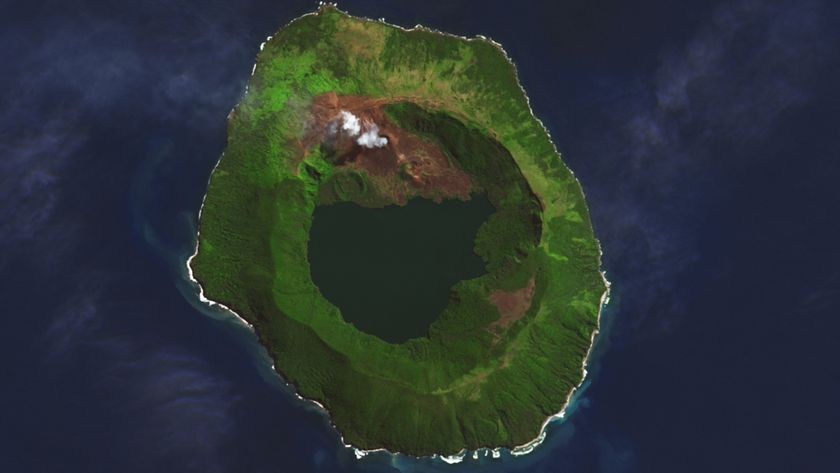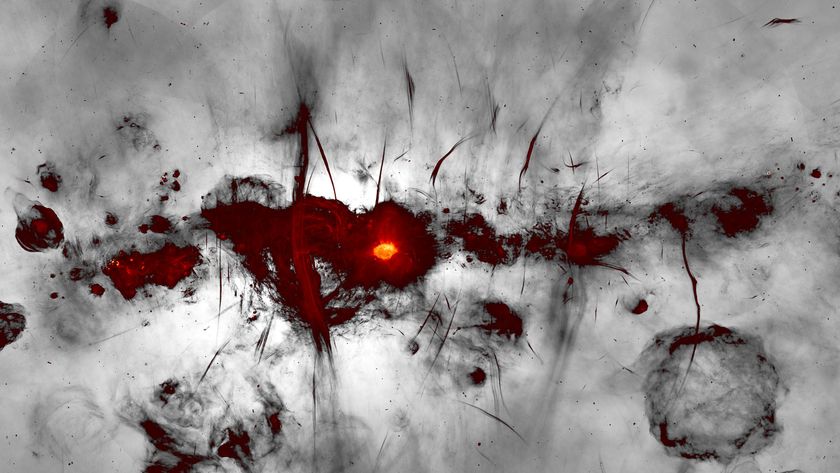
Strong Solar Flares This Week a Rare Double Whammy, Scientists Say

Two powerful solar storms arriving at Earth today have captured the public's attention for their potential to spark amazing auroras, but scientists say there's another reason to watch. The solar double whammy is actually somewhat rare.
The particles from the two flares could interact as they head toward Earth, and researchers at the National Oceanic and Atmospheric Administration's Space Weather Prediction Center said they are monitoring the situation.
The sun unleashed a medium-sized flare on Monday (Sept. 8) followed by a second, larger flare, called an Earth-directed X-class flare, on Wednesday (Sept. 10). Both are from the same active sunspot region (Active Region 2158) and are directed at Earth, said Thomas Berger, director of the Space Weather Prediction Center, during a news conference yesterday (Sept. 11).
Solar flares are powerful eruptions of radiation. Large flares can produce coronal mass ejections (CMEs), waves of solar plasma and charged particles that can travel millions of miles an hour through space. Last night, as expected, the first of the CMEs made its appearance and is expected to cause geomagnetic storming, reaching moderate levels, this morning, according to the Space Weather Prediction Center. [Sun Storm: See Images of the Amazing Solar Flares]
The magnitude of the new CMEs, however, isn't that unusual, Berger said. Typically, the sun launches between 100 and 200 CMEs of this size during a solar cycle, a time encompassing about 11 Earth years, he said.
"The unique thing about this event is that we've had two in close succession, and the CMEs could possibly be interacting on their way to Earth, at the Earth's orbit or beyond perhaps — we don't know that yet," Berger said.
In past solar cycles, it was not unusual to have two solar eruptions aimed at Earth at the same time. William Murtagh, a program coordinator at the Space Weather Prediction Center, told Live Science in an email.
Sign up for the Live Science daily newsletter now
Get the world’s most fascinating discoveries delivered straight to your inbox.
"But we have seen very few such occurrences during this cycle," Murtagh said. "It is generally recognized that a worst-case scenario geomagnetic storm would involve two or more CMEs in succession, prolonging a geomagnetic [storm] over several days."
What's more, the second CME is moving at a faster speed and catching up to the first one.
"Currently our models show that it is not going to catch up to and interact with that CME, the first CME, when it's at the Earth's orbit," Berger said. But, he added, "the models are not exact and the inputs are not exact. So we're keeping a close watch on whether this storm is stronger than might be expected because of this possibility of interaction."
Many of us take the sun for granted, giving it little thought until it scorches our skin or gets in our eyes. But our star is a fascinating and complex object, a gigantic fusion reactor that gives us life. How much do you know about the sun?
Solar Showdown: How Well Do You Know Our Sun?

"It's fairly rare for two CMEs of this magnitude to come in close succession like this," he said. "Because of this we cannot rule out higher storm levels," particularly in polar regions where interactions with the Earth's magnetic field are strongest.
The International Space Station will measure the CMEs as they pass by, giving scientists on Earth a 30- to 45-minute head start to prepare for the CMEs. But, on the upside, the solar event is expected to produce an array of beautiful northern lights, visible to people living in the northern United States, said William Murtagh, a program coordinator at the Space Weather Prediction Center.
Whatever the CMEs' effects, the Space Weather Prediction Center said it would be following them closely.
"We're keeping a close eye on these events," Berger said.
The geomagnetic storming from these events is expected to continue through Sunday (Sept. 14), according to the Space Weather Prediction Center.
Editor's Note: If you have an amazing aurora or general science photo you'd like to share for a possible story or image gallery, please contact managing editor Jeanna Bryner at LSphotos@livescience.com.
Follow Laura Geggel on Twitter @LauraGeggel and Google+. Follow Live Science @livescience, Facebook & Google+. Original article on Live Science.

Laura is the archaeology and Life's Little Mysteries editor at Live Science. She also reports on general science, including paleontology. Her work has appeared in The New York Times, Scholastic, Popular Science and Spectrum, a site on autism research. She has won multiple awards from the Society of Professional Journalists and the Washington Newspaper Publishers Association for her reporting at a weekly newspaper near Seattle. Laura holds a bachelor's degree in English literature and psychology from Washington University in St. Louis and a master's degree in science writing from NYU.











